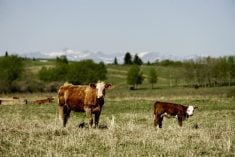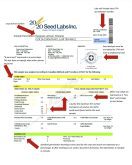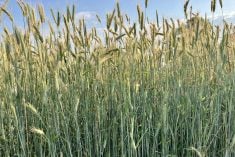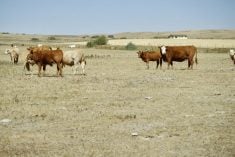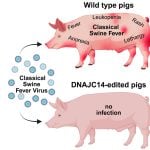After the drought of 2021, diversifying sources of winter feed in 2022 can help mitigate risk on-farm by taking advantage of the whole growing season to make feed. Stockpile grazing perennial forages is a cost-effective winter feed option that can meet the nutritional requirements of cattle. Stockpile grazing means cutting forage early in the growing season for hay or pasture and then letting it grow until fall or early winter when it is grazed a second time. Haying or grazing before the first week of July allows for enough forage to grow by the second graze, especially under dry conditions.
Good characteristics in a perennial forage species for stockpile grazing are high yield, high and stable nutritional value and persistence. Seeding grasses with legumes that fix nitrogen improves the yield and protein content of the forage stand. It is common for the prevalence of legumes in the forage stand to decrease over time. This can be prevented with the right row configuration of the seeder and mixing the right ratio of grass to legumes at seeding time along with proper grazing management.
Cicer milkvetch and meadow bromegrass can be a productive stockpile grazing mixture in Western Canada. Cicer milkvetch is a long-lived non-bloat perennial legume that late in the year retains its leaves after a hard frost while delivering high yield and digestibility. The slow establishment of cicer milkvetch can be improved by using new varieties, scarified seed and proper seeder setup. The high late-season nutritional value of meadow bromegrass is based on its leafiness and ability to stay green. While these two species are most productive in the dark brown and black soil zones, they can be grown in the brown soil zone given enough moisture at establishment.
Plant breeding and agronomy research at the University of Saskatchewan is improving cicer milkvetch and meadow bromegrass for stockpile grazing. The objective of the breeding component is to develop a productive new variety of both cicer milkvetch and meadow bromegrass to be seeded together for stockpile grazing. For cicer milkvetch, this also includes improving germination and seedling vigour. The objective of the agronomy component is to identify the correct ratio of cicer milkvetch to meadow bromegrass at seeding time and whether the two species should be seeded in mixed or alternate rows.
Three separate trials are being used in this project. The first is a very diverse breeding nursery of cicer milkvetch. Populations will be selected from this nursery to improve the establishment, yield and quality of the future variety. Early results indicate that the yield of cicer milkvetch can be improved using both existing varieties and new sources of genetic diversity. The second trial is a meadow bromegrass nursery made up of varieties and breeding populations from the University of Saskatchewan and the United States. Results from this trial are still to come.
The third trial is testing the seed row configuration and species ratio when seeding cicer milkvetch and meadow bromegrass. There are two seed row configurations, including mixed rows when cicer and meadow are seeded in the same row; and alternate rows, when each species gets its own seed row. Six different species ratios are being tested based on the recommended seeding rate for the two species as monocultures. These ratios include:
- 100 per cent cicer
- 80 per cent cicer and 20 per cent meadow
- 60 per cent cicer and 40 per cent meadow
- 40 per cent cicer and 60 per cent meadow
- 20 per cent cicer and 80 per cent meadow
- 100 per cent meadow
Each ratio is being tested in both mixed and alternate rows for a total of 12 treatments in this third trial.
Results of the agronomy trial from 2020 and 2021 indicate that higher proportions of cicer milkvetch (80 per cent or 60 per cent of the recommended seeding rate) seeded in alternate rows as a mixture with meadow bromegrass delivers high yield with superior nutritional value. Compared to mixed rows, alternate row seeding tended to have higher yield, more cicer milkvetch in the harvested forage and lower fibre content. Treatments with higher amounts of cicer milkvetch versus meadow bromegrass delivered among the highest yield in the trial with more cicer milkvetch in the stand that helped to increase crude protein and decrease fibre content. All treatments in the agronomy trial had a crude protein content that could meet the needs of cows in their first and second trimester of pregnancy.
This research will continue for several years to confirm these early results. The final products for Canadian farmers will be a new variety of cicer milkvetch and meadow bromegrass along with information on how to seed these two crops together for stockpile grazing. Thank you to our research funders: the Saskatchewan Ministry of Agriculture’s Agriculture Development Fund, the Saskatchewan Cattlemen’s Association and the Saskatchewan Forage Seed Development Commission.
David MacTaggart is a master of science candidate at the University of Saskatchewan.



